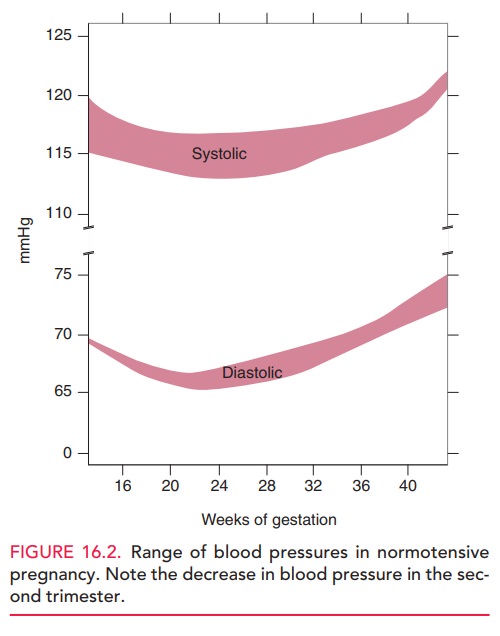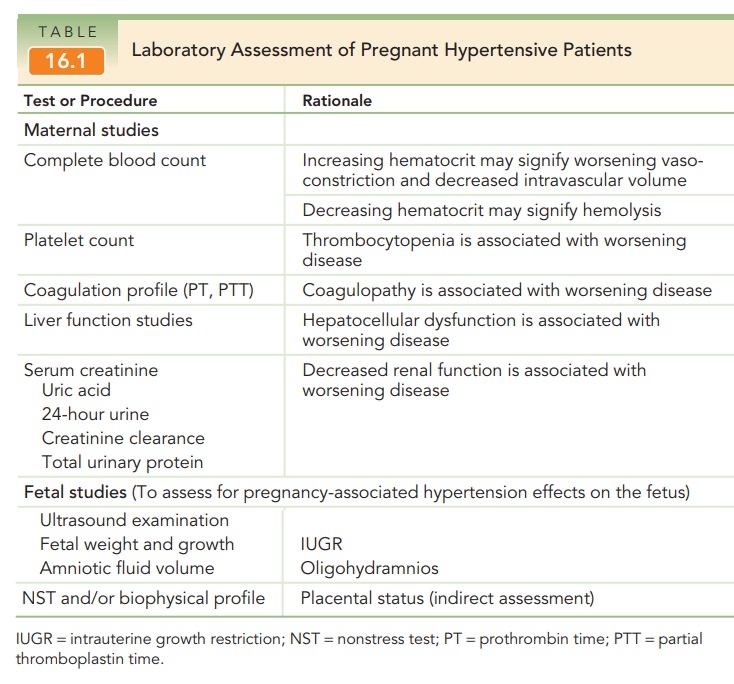Chapter: Obstetrics and Gynecology: Hypertension in Pregnancy
Hypertension in Pregnancy: Evaluation
EVALUATION
The history and physical
examination are directed toward detection of pregnancy-associated hypertensive
disease and its signs and symptoms. A review of current obstetric records, if
available, is especially helpful to ascertain changes or progression in
findings. Visual disturbances,
es-pecially scotomata, or unusually severe or persistent headaches are
indicative of vasospasm. Right-upper-quadrant pain mayindicate liver
involvement, presumably involving disten-tion of the liver capsule. Any history
of loss of conscious-ness or seizures, even in the patient with a known seizure
disorder, may be significant.
The
position of the patient influences blood pressure. It
islowest with the patient lying in the lateral position, high-est when the
patient is standing, and at an intermediate level when she is sitting. The
choice of the correct-size blood pressure cuff also influences blood pressure
readings, with falsely high measurements noted when normal-sized cuffs are used
on large patients. Also, during the course of pregnancy, blood pressure
typically declines slightly in the second trimester, increasing to prepregnant
levels as gestation nears term (Fig. 16.2). If a patient has not been seen
previously, there is no baseline blood pressure against which to compare new
blood pressure determinations, thereby making the diagnosis of
pregnancy-related hyper-tension more difficult.

The patient’s weight is compared
with her pregravid weight and with previous weights during this pregnancy, with
special attention to excessive or too-rapid weight gain.
Peripheral edema is common in
pregnancy, especially in the lower extremities.
However,
persistent edema unresponsive to resting in the supine position is not normal,
especially when it also involves the upper extremities, sacral region, and
face.
Indeed, the puffy-faced,
edematous, hypertensive preg-nant woman is the classic picture of preeclampsia.
Careful blood pressure determination in the sitting and supine positions is
necessary. Funduscopic examination may de-tect vasoconstriction of retinal
blood vessels indicative of similar vasoconstriction of other small vessels.
Tenderness over the liver, attributed partly to hepatic capsule disten-sion,
may be associated with complaints of right-upper-quadrant pain. The patellar
and Achilles’ deep tendon reflexes should be carefully elicited, and
hyperreflexia noted. The demonstration of clonus at the ankle is espe-cially
worrisome.
The maternal and fetal laboratory
evaluations for pregnancy complicated by hypertension are presented in Table
16.1 and demonstrate, by the wide range of tests, the multisystem effects of
hypertension in pregnancy. Maternal liver
dysfunction, renal insufficiency, and coagulopathy are significant concerns and
require serial evaluation. Evaluationof fetal well-being with
ultrasonography, and a nonstress test and/or biophysical profile are important.

Related Topics